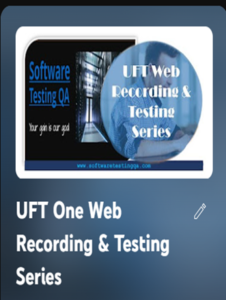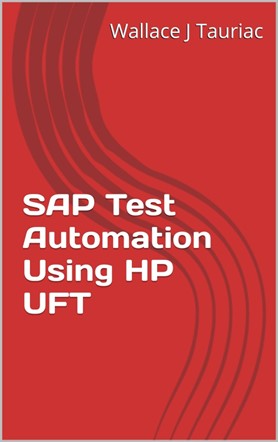UFT One Evaluation
I recently had an opportunity to evaluate the 24.3 version of UFT owned now by a company called OpenText. I started using the software when it was known as QTP back in 2000. It just recently got a new name UFT One with a sister product UFT Developer. My expertise is with the UFT One software. I am impressed with its evolution. I still think it is a viable product to use for web and desktop applications.
I am especially interested in what new web technology it supports along with what new business applications it supports, such as, SAP and Salesforce web applications.
It might be helpful if I mention something about the process of evaluating software so we are on the same page.
Software evaluation is the practice of assessing the quality of one or more software products with the intention of product selection. You might have a software tool or application already onsite, or you have a desire to obtain one for implementation. In either case the evaluation process is the same: Upgrade or install the latest release of the software, verify/validate the features and functions, assign values to the test results, and determine if the results indicate implementation worthiness. This is an approach to software testing tool procurement.
Software Testing is the process of evaluating software based on test requirements gathered from business users and application development specifications. Validation is the action of checking or proving the correctness of a test. Verification is the process of establishing accuracy regarding a test.
There is a formal process for conducting a software evaluation that is called PUGH MATRIX. It formalizes the decision-making process to help you select one or more improvement opportunities to pursue in detail. The Pugh Matrix uses specified evaluation criteria to compare alternative improvement opportunities. The Pugh Matrix is also known as the Decision Matrix or Selection Matrix. Stuart Pugh first developed it in the 1960s.
However, I am going to use an approach I have used many times which I think works well for deciding on whether to procure a tool or not. It also can be used to do a comparative evaluation where multiple software products are being considered. In this situation I am looking at the UFT One product only.
I used nine items for criteria. There can be more, but I think these items serve me well. The bottom-line is the calculated percentage. If it is over 50% then the software tool is valuable. My assessment of each criterion’s importance may be different from yours. The importance of tool features will always be subjective. You can start with that change to the chart and see if its percentage score is above 50%. If not, you may want to look for an alternative product. I did not include product price and maintenance costs. That may also cause you to lower the percentage. There are other possible criteria that can be added to affect the overall outcome.
Criteria | UFT One | Standard | Importance | UFT Score | Standard Score | PCT |
Ease of Use – Coding | 3 | 5 | 3 | 9 | 15 |
|
Ease of Use – Recording | 4 | 5 | 3 | 12 | 15 |
|
Ease of Use – Testing | 4 | 5 | 3 | 12 | 15 |
|
Documentation | 3 | 5 | 4 | 12 | 20 |
|
Product Support | 3 | 5 | 2 | 6 | 10 |
|
Language Support | 2 | 5 | 3 | 6 | 15 |
|
Application Support | 4 | 5 | 4 | 16 | 20 |
|
Database Support | 4 | 5 | 4 | 16 | 20 |
|
Test Results Support | 4 | 5 | 3 | 12 | 15 |
|
|
|
|
| 101 | 145 | 69.7% |
If I were doing this for a company that is a fortune 500 company, I would include security which would boost the percentage more. It is always necessary to obtain other criteria that addresses company requirements or restrictions.
My experience with evaluating the recording, testing, and customization of the code makes me continue to appreciate the software testing tool that I have used for years. If a company can afford its license and maintenance agreement costs, I do recommend the purchase of the software to use for test automation.
One thing I am extremely appreciative of is how the software look and feel has been maintained. I wrote a book and published it on Amazon in 2016. The information within it is still valid today. With all the new capabilities added to the product, the core of the product is still the same. To me that is a testimony of its stability.
I have been exposed to other software in the past few years that are open-source tools. And they are good competitors to UFT One. For companies without an extensive software automation tools budget, I believe those tools are very good alternatives. That is another criteria if I had included in my evaluation and been comparing to an open-source tool, UFT One might not be the winner.
I close with this thought. I believe open-source tools will usually win over license software tools of the same capabilities. But companies that require security features, certain licensed business application support, and professional consulting support cannot ignore the licensed tools.
SAP Test Automation Using HP UFT (Amazon e-book) | Click here |
UFT Web Recording & Testing Video Playlist (These videos are evaluation demos) | Click here |


